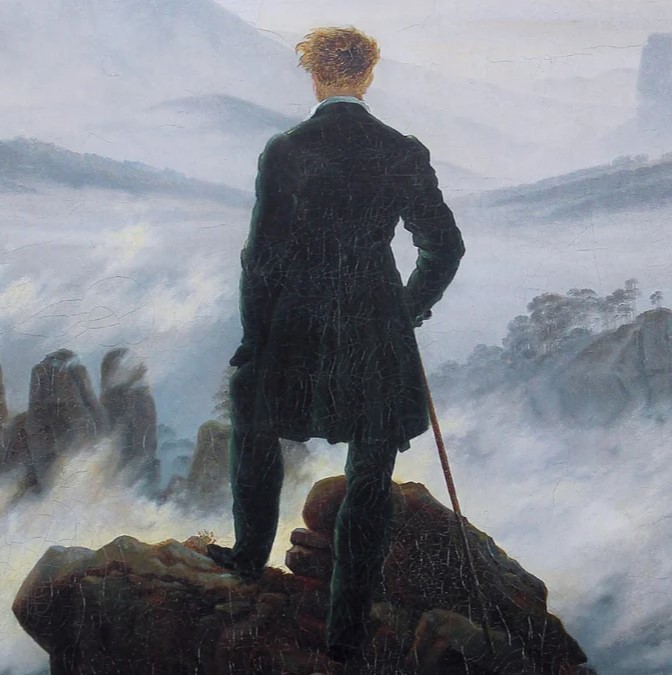
Romantic Period's Theme Trilogy
Romantic Period's Theme Trilogy
The Romantic Period stands out as one of the most prominent eras in English literature. Emerging in 1798 and lasting until 1837, this period marked a significant departure from previous literary trends, as Romantic poets sought to create a unique voice through themes of individualism, nature, and imagination. As Wordsworth famously described, "Poetry is the spontaneous overflow of powerful emotions," (263) highlighting the Romantic focus on the emotional depth of literature, particularly in poetry. Romantics valued imagination above all else, perceiving mysteries both within the self and in the natural world that logic alone could not unravel. While various themes are explored across Romantic literature, three primary features—individualism, nature, and imagination—define this period. This essay aims to explore these central themes that distinguish Romantic poets from their predecessors.
To begin with, the emphasis on individualism is one of the most defining aspects of Romanticism. Romanticism arose as a reaction against the preceding Neo-Classical Period, which emphasized rationalism. Neo-Classical poetry was objective and rationalist, seldom reflecting personal feelings or experiences. In contrast, the Romantics embraced subjectivity, believing each individual possesses a unique inner world of thoughts and emotions. They argued that poetry should express this personal inner world, with the individual as the most authentic source of inspiration. For instance, Wordsworth’s Solitary Reaper, a pivotal work of the Romantic Period, underscores the theme of individuality:
"Behold her, single in the field,
Yon solitary Highland Lass!"
Here, Wordsworth emphasizes both the solitude of the farmer and her individual existence, reflecting the Romantic focus on personal identity and emotional resonance.
Another significant characteristic of the Romantic Period is its celebration of nature. Romantic poets regarded nature as a divine force and often infused their works with spiritual elements, creating an inseparable bond between nature and their writing. William Blake, for example, employs animals as symbols in his poems The Tyger and The Lamb. In The Lamb, Blake pays homage to the Creator, capturing a sense of innocence and faith:
"Little Lamb, who made thee?"
Conversely, The Tyger explores God’s power and majesty through a depiction of a more formidable creature. Together, these poems symbolize the contrasting states of innocence and experience, as encapsulated in Blake's Songs of Innocence and Experience, a pioneering work of the Romantic era.
Once and for all, imagination stands as a cornerstone of Romanticism, allowing poets to transcend reality and construct worlds from their creative visions. Unlike the Neo-Classical poets, Romantics built their literary landscapes through vivid imagery and imaginative exploration. Samuel Taylor Coleridge’s Kubla Khan, often described as a "vision in a dream," exemplifies this use of imagination. This poem presents a fantastical realm inspired by the Mongol ruler Kubla Khan, blending history with visionary creativity. Similarly, Percy Bysshe Shelley’s Ozymandias uses imaginative elements to depict the fall of the Egyptian pharaoh Ramses II, encapsulating the power of imagination to reconstruct history through art.
In conclusion, the Romantic Period in English literature produced works that are both distinct and enduring. By foregrounding themes of individualism, nature, and imagination, Romantic poets introduced a new voice and vision to the literary world. Their work aimed to bring souls to poetry and to explore human emotion and the natural world with a depth and freedom unmatched in earlier periods.
Wordsworth, William. Lyrical Ballads. Oxford UP, 1967.
Wordsworth, William. "The Solitary Reaper." Poetry Foundation, n.d. Accessed 28 Oct. 2024.
Blake, William. "The Tyger." Poetry Foundation, n.d. Accessed 28 Oct. 2024.
Blake, William. "The Lamb." Poetry Foundation, n.d. Accessed 28 Oct. 2024.
Coleridge, Samuel Taylor. "Kubla Khan." The Norton Anthology of English Literature, edited by M. H. Abrams, 6th ed., vol. 2, W. W. Norton & Company, 1993, p. 346.
Shelley, Percy Bysshe. "Ozymandias.". Poetry Foundation, n.d. Accessed 28 Oct. 2024.
Yorumlar

